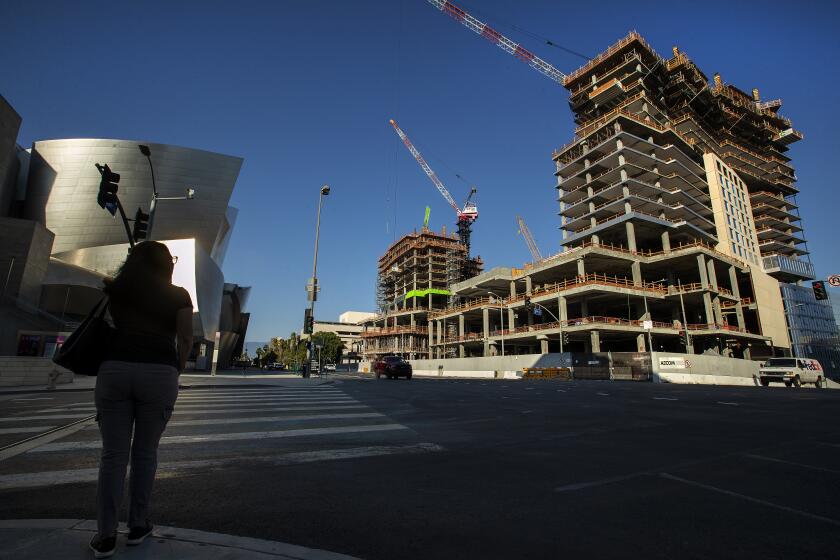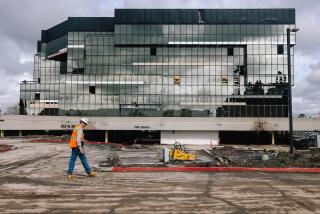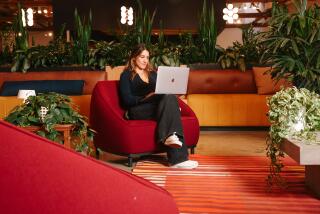Workers are quietly trickling back to Los Angeles offices
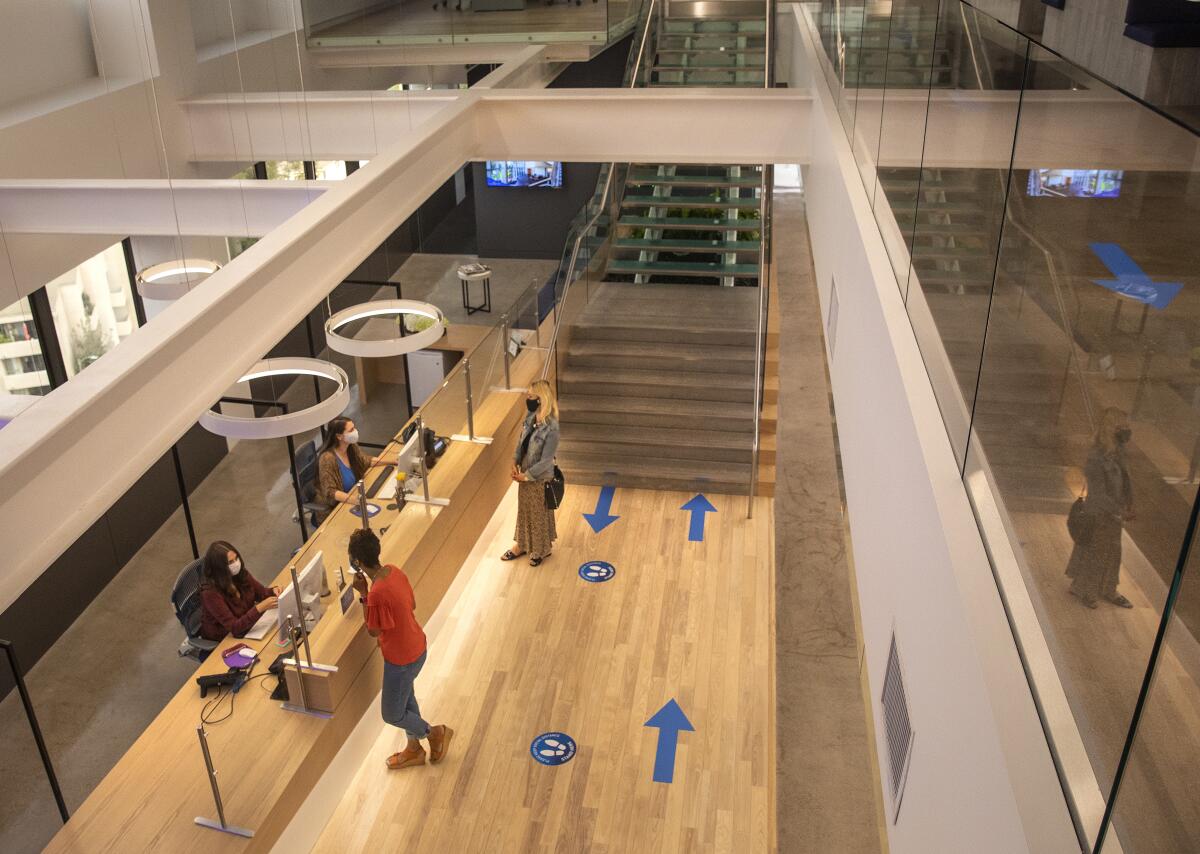
The number of people working in Southern California office buildings has more than doubled in recent weeks, according to one real estate expert, as some companies begin to return from the great business shutdown enacted in March to cope with the pandemic.
Building operators are gearing up for a phased return as some companies — especially those in creative fields such as entertainment — ease back into offices that are being prepped to provide more elbow room for rotating teams of workers as COVID-19 remains a persistent health threat.
“The newness of remote working has worn off for people and settled into fatigue,” said Bob Nowak, executive vice president of property management at JLL, who oversees 20 million square feet of offices for different landlords. “People want to return to their working business centers and collaborative cultures as quick as they can.”
Nowak estimates that occupancy of office workers has grown from 10% of building capacity after the shutdown to as much as 25%. That still leaves office enclaves such as downtown Los Angeles’ financial district barren of life compared with pre-pandemic days, but it marks a trend toward partial reoccupancy.
In a downtown missing its office workers, tourists and museum visitors, work on the Frank Gehry-designed $1-billion Grand complex reaches the halfway point.
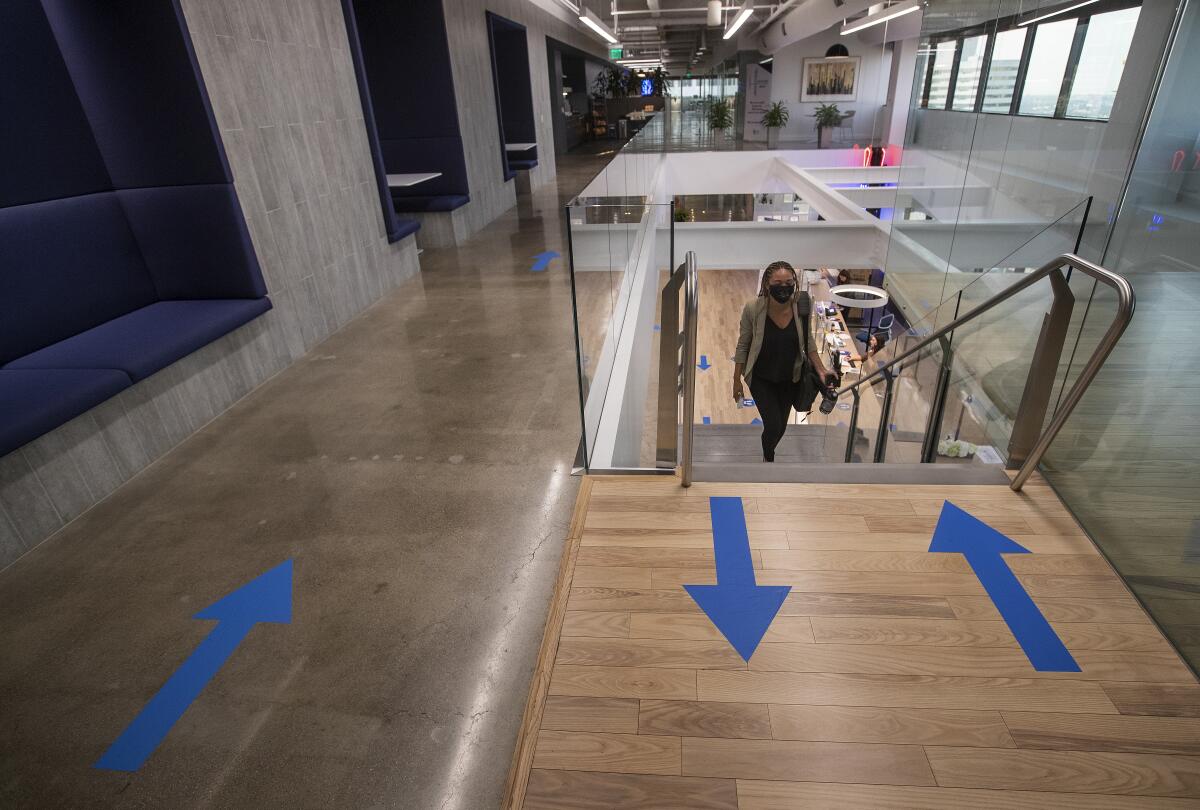
“White-collar business has drawn the conclusion that socialization is key to productivity,” he said. “What we are hearing is that productivity is noticeably dropping” as working from home drags on during a pandemic with no end in sight.
Which businesses are most aggressive about getting people back to working together?
“Anybody working in an arena with creativity, such as new content,” Nowak said. “There’s a lot pressure on entertainment groups to get back and get all these series shot. They are pushing hard.”
One of those champing at the bit to return is Reed Hastings, co-chief executive of Netflix, who told the Wall Street Journal recently that he does not see “any positives” to working from home and that not being able to get together in person “is a pure negative.”
Hastings joked that he’d like to see his workforce back in the office “12 hours after a vaccine is approved,” which fits in with the preference of many office workers — at least as far as their bosses are concerned.
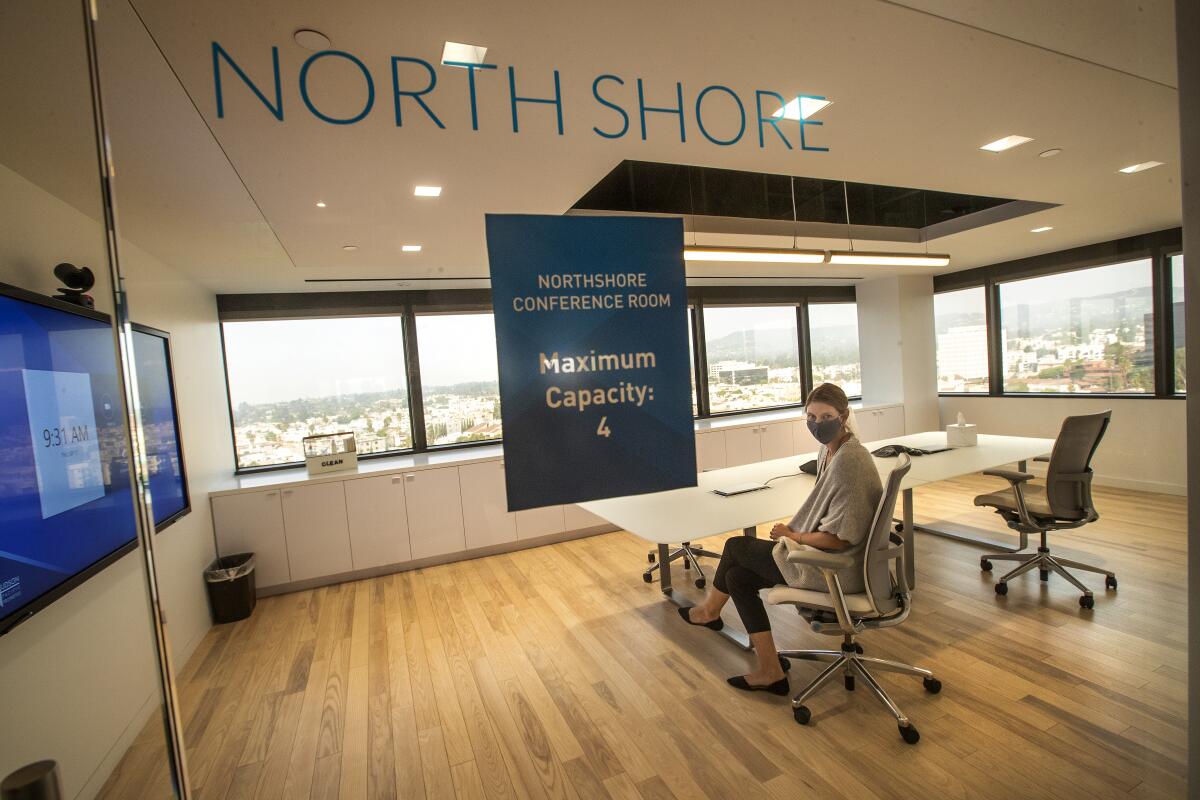
In a recent national survey of white-collar company executives, 70% said their employees want to return to the office full time once a vaccine is available, real estate brokerage Newmark Knight Frank said.
Although a vaccine promises to give workers and their employers more peace of mind about reentering their offices, not everyone is willing to wait for an all-clear from the federal Centers for Disease Control and Prevention.
About 25% of the country’s workers are already coming into the office regularly — not five days a week, but at least two or three days, according to research by Newmark Knight Frank broker Ryan Harding and his colleagues. He estimated that 50% to 75% of workers will be back at their desks by next spring.
“As we inch closer to a vaccine, people are getting more interested in coming back,” Harding said. “Toward the end of 2021, there will be nearly full offices.”
That isn’t to say that the great work-from-home experiment will be erased.
Harding echoed pronouncements by his clients and other prominent executives such as Hastings who have conceded that at-home days on the clock are here to stay. A five-day workweek at Netflix will probably include one day at home and four in the office, Hastings said.
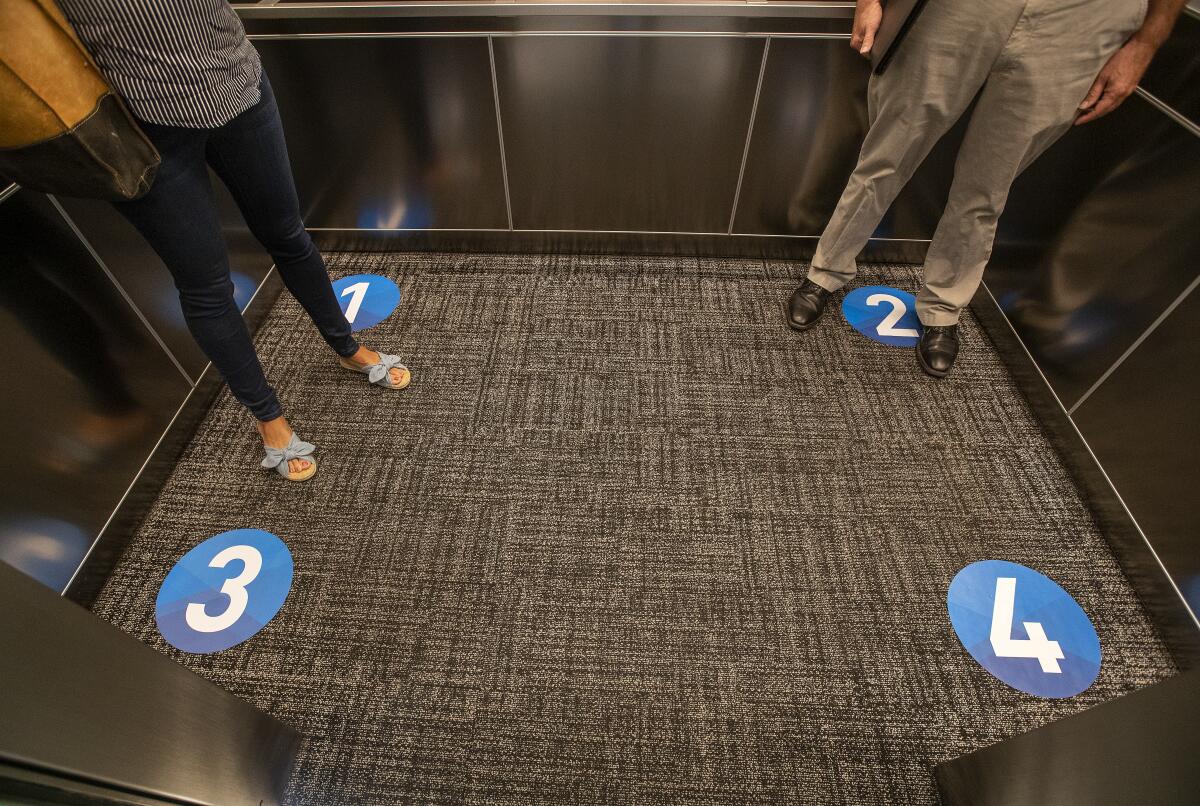
Larry Fink, chief executive of Wall Street investment management company BlackRock, said in a teleconference with Morningstar Inc. that his workers will never be 100% together the way they were before the pandemic.
“Maybe 60% or 70%, and maybe that is a rotation,” he said. “But I don’t believe we’ll ever have a full cadre of people in office.”
Rotation is a common theme among architects and planners, who envision many companies having employees rotate time in the office with time at home. That would limit the number of the people in the office on any given day and make it easier to keep workers at a suitable distance from one another even if they’ve been vaccinated against COVID-19.
Distancing and other planned safety measures are intended in part to ease the anxieties of people who have been traumatized by the pandemic that has killed more than 200,000 Americans and dramatically altered the way most live their lives.
Simply coming back to the office has been emotionally stressful for employees of some of his company’s clients, Harding said.
“It was a shock to the system to work from home” for many, Harding said. “Coming back is equally as traumatic.”
Emphasizing safety is crucial to make offices feel safe, planners say, but that doesn’t necessarily mean walling workers off from one another in a warren of plexiglass shields.
“It exacerbates fear in people to put them in a plastic box in a mask,” Nowak said. “That is not going to get them out of their safe homes.”
A fully pandemic-proof office probably can’t exist once humans are thrown into the mix to thwart designers’ best efforts at social distancing and constant sanitation.
That’s why many businesses and office landlords such as Hudson Pacific Properties are taking a more measured approach that improves safety behind the scenes, such as improved air filtration and some simple fixes people can see that encourage distancing without changing the communal essence of the workplace.
Hudson Pacific owns 15 million square feet of offices for rent in the West, including buildings in Vancouver, Canada, that have returned to about 20% occupancy, President Mark Lammas said. Occupancy in its U.S. buildings in such cities as Seattle, San Francisco and Los Angeles is more like 5% or 10%, but Hudson Pacific has been planning since the spring how to repopulate the buildings it saw empty out in a rush in March.
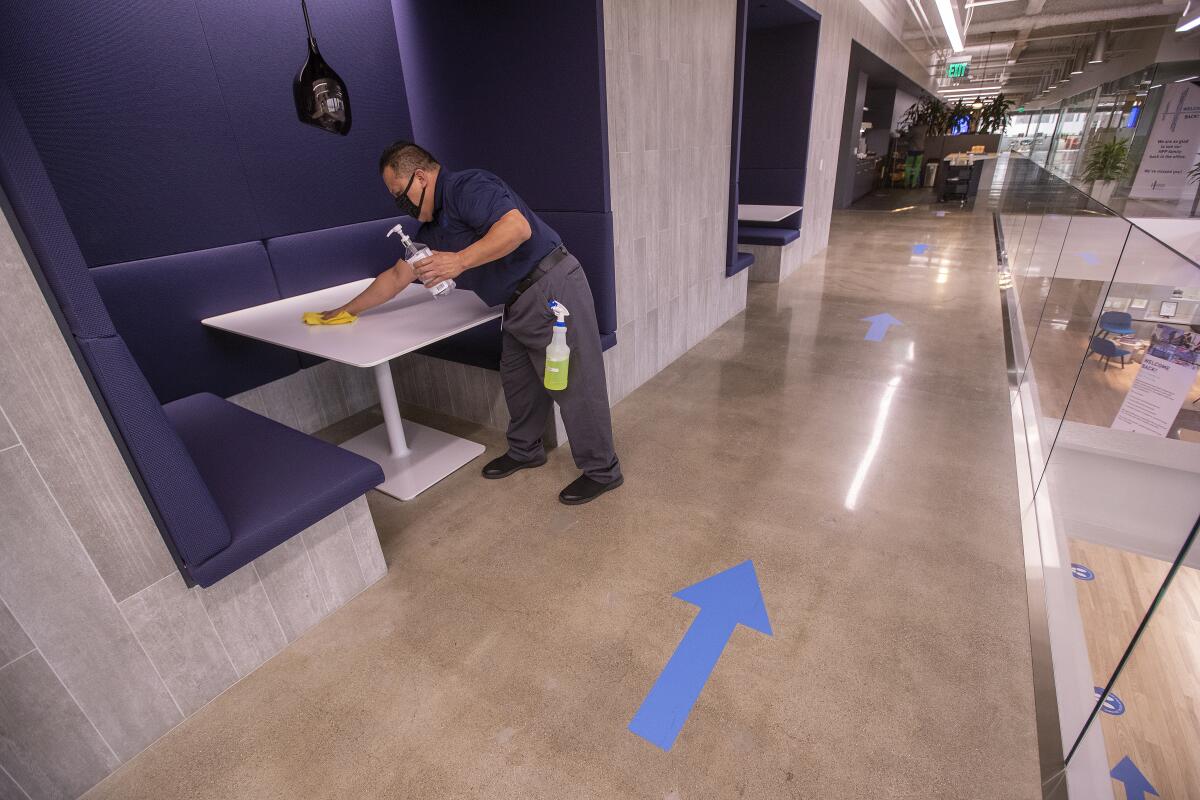
Their buildings have been ready since June 1 for people to come back inside. The company hopes to set an example for them at its headquarters in the Brentwood neighborhood of Los Angeles, where occupancy in its offices is back to nearly 50%.
Hudson Pacific employees are required to be in the office two days a week.
“Our own view is that people are eager to get back to the office,” Lammas said. “While work from home may have been a stopgap measure and necessary, it is not really a long-term solution. Without being in the office, you lose a sense of cohesion — the ability to collaborate and mentor. It eventually takes a toll on your culture.”
Safety from the coronavirus starts with “as much ventilation as possible,” said Natalie Teear, who is in charge of environmental sustainability at Hudson Pacific. That means opening doors and operable windows. Fans run for two hours before work every morning to flush the buildings, and then air conditioning systems with upgraded filtration clean recirculated air.
That process has become more complicated in recent weeks as smoke from wildfires blanketed the West, she said. “We’re able to seal off our buildings when we need to.”
More visible measures at Hudson Pacific include signage that encourages distancing, some plexiglass barriers and removal or reconfiguration of furniture to discourage people from congregating too closely. Cleaning is a constant activity.
“We have had a couple of employees test positive” for the coronavirus, Lammas said, “but they have not infected others.”
Office leasing in Los Angeles County fell to its lowest point since the Great Recession in the second quarter as many businesses reeling from coronavirus restrictions and economic uncertainty halted their searches for new space.
Employees have been “invited” to return to the offices of JLL, the international real estate services company for which Nowak works, and many have chosen to do so.
The Chicago company has 28,400 employees in the U.S., and about half of those who work in corporate offices come to their desks on workdays, said Peter Belisle, who oversees the firm’s business in the Southwest.
JLL started reentry in June with about 10% to 15% occupancy, which gave the company a chance to assess the flow of foot traffic, set limits on occupancy in conference rooms and take other measures to keep people safely apart. Putting on a mask is mandatory if you get up from your desk and move around.
“If you don’t want to follow the protocols or you don’t want to wear a mask, then you will be required to keep working at home,” Belisle said. “This isn’t a suggestion. It’s a zero-tolerance policy, for the safety of colleagues.”
The company will stick with its 50% occupancy plan until the CDC or local health officials deem it safer to allow people to work more closely together. The Los Angeles County guidelines allow landlords to decide how much occupancy in their buildings is safe, JLL said.
Permitting people to pull on the oars together is essential for the company to prosper, Belisle said. New hires, in particular, need to be around others to learn how to do their jobs.
Overhearing conversations, having chance meetings and observing experienced peers interact with clients and business prospects are necessary parts of learning the real estate business, he said. “Collaboration, core training and mentoring are some of the big pillars we really think are important for our company.”
So while Los Angeles County struggles to bring down the daily number of new cases and health officials warn of another wave of coronavirus infections in the months ahead, a patchwork of business strategies such as setting up restaurant tables on sidewalks and limiting the number of shoppers in stores has emerged.
“What’s interesting is, I see activity happening. People are busy and going to places that are open,” Nowak said. “They’re doing everything — they’re just not going to work in person. Their employers aren’t forcing them back.”
More to Read
Inside the business of entertainment
The Wide Shot brings you news, analysis and insights on everything from streaming wars to production — and what it all means for the future.
You may occasionally receive promotional content from the Los Angeles Times.
